Building a Grass House Today - Triumph and Tragedy
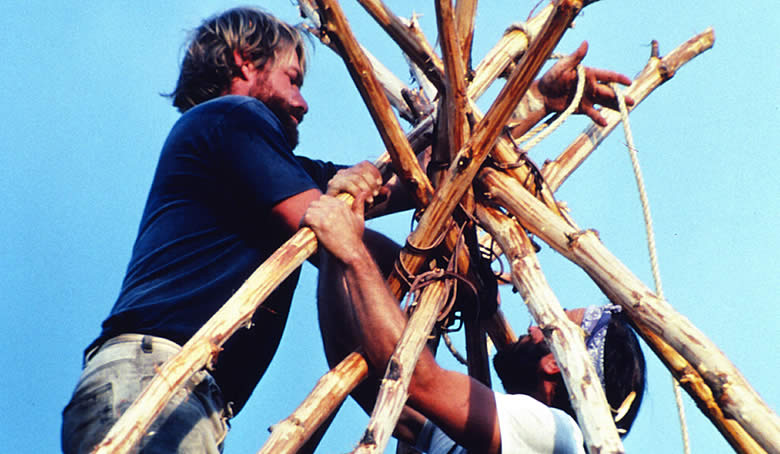
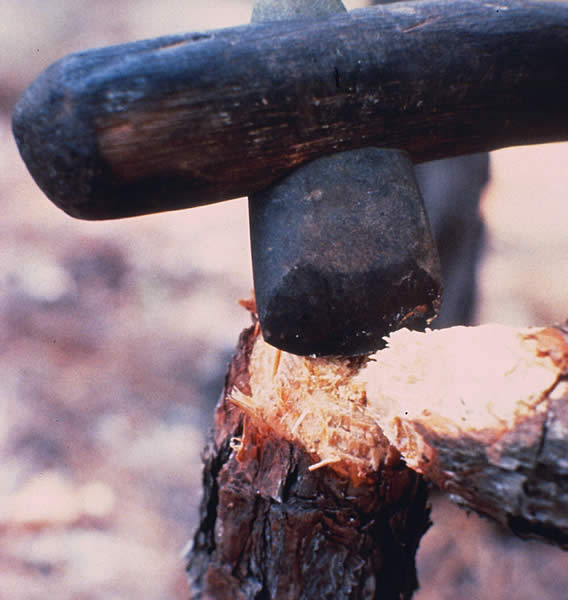
About 20 years ago the Texas Parks and Wildlife Department decided to build a Caddo-style grass house at Caddoan Mounds State Park in East Texas. They wanted to give park visitors a better idea of what ancient village life was like. Using the early explorers' accounts as a guide, a small group of archeologists and volunteers built a Caddo-style "grass" house using traditional methods and materials. They quickly learned that it was not easy work.
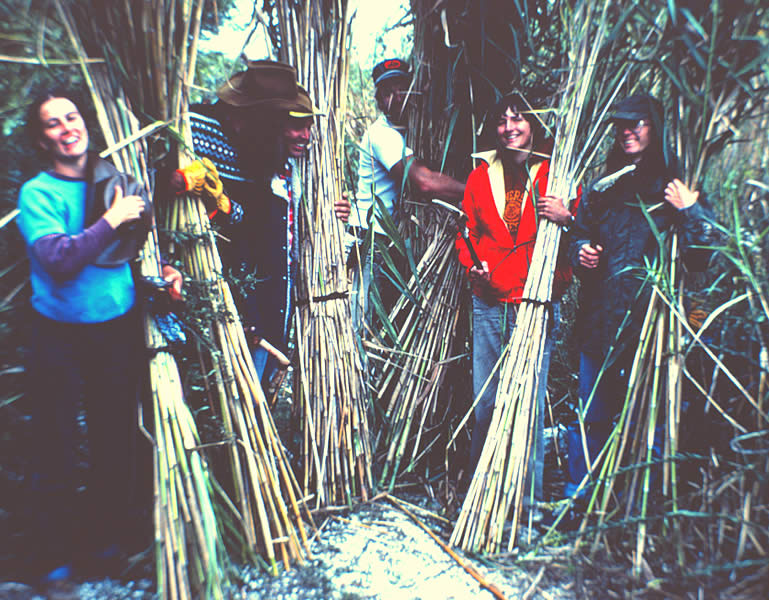
They had to find the right building materials, which was not easy. Most of the surrounding forest had been cut down to make way for modern farms. So, instead of tall native grass, they had to use river cane. They also had to learn how to make stone and wooden tools and then use them.
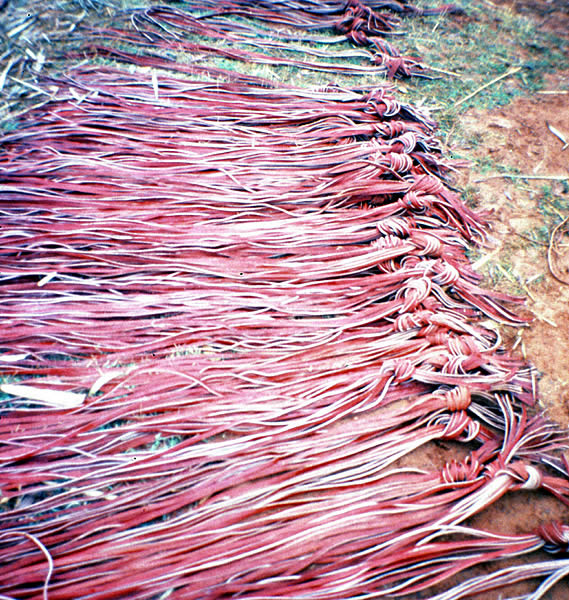
They had to find a way to join the pieces of the house together. For this, they used store-bought strips of leather to tie the poles together. This turned out to be a mistake, as leather rots pretty quickly in a humid environment, plus mice and rats like to chew leather. Ancient Caddo builders, who knew better, used strips of strong tree bark (the inner, flexible part), which lasted longer.
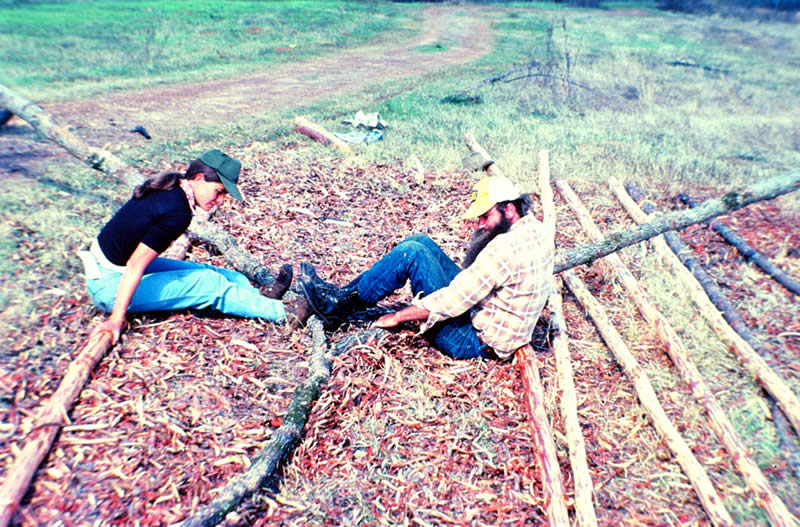
Unlike the Caddo, who worked together and could build a house in a single day, the state park workers took several weeks to build their house. Sometimes they had to use modern tools and equipment rather than the old-style tools and methods. But, in the end, they succeeded in building a fairly sturdy grass house that closely resembled the houses described by the explorers.
Check out the house-building process from start to finish in the pictures in the slide slow below. See if you can spot some of the modern tools and safety equipment the workers had to use. Click on the arrows in the bottom right corner to make it full screen.
Disaster Strikes!
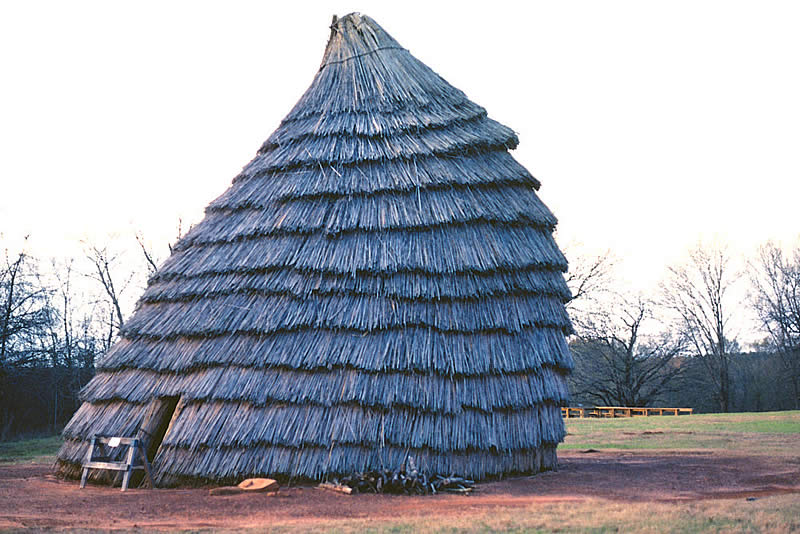
The "modern" grass house stood tall and sturdy for years at the park. But the story did not end there. One day a huge storm blew onshore from the Gulf of Mexico. The powerful winds twisted the house, and it began to lean. It looked kind of like the Leaning Tower of Pisa!
Gradually the grass house began to fall apart and the park rangers decided it was not safe for visitors to enter. But instead of just tearing it down, they let archeologists conduct an experiment, based on a Caddo tradition involving fire.
The ancient Caddo sometimes destroyed the houses of their leaders by burning—sometimes because the house was failing apart and sometimes because the leader had died. Sometimes the Caddo buried departed family members beneath their own house before burning it down to honor the person.
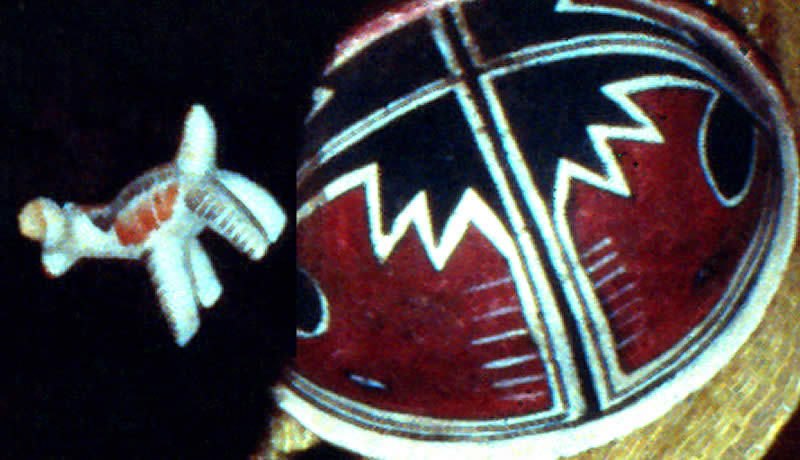
Lacking a willing human volunteer to be buried in the "modern" Caddo house, an alternative was found. Sadly, a dog named Ranger had just been killed by a car. Ranger's owner decided that a "state burial" would be quite an honor for his old four-legged friend. So Ranger was buried beneath the floor of the leaning grass house along with special things like beads and fancy pottery that were like those the ancient Caddo buried with their dead. They also placed straw mats, food (like pots full of dried corn and beans), and other items near the dog's grave in the leaning house.
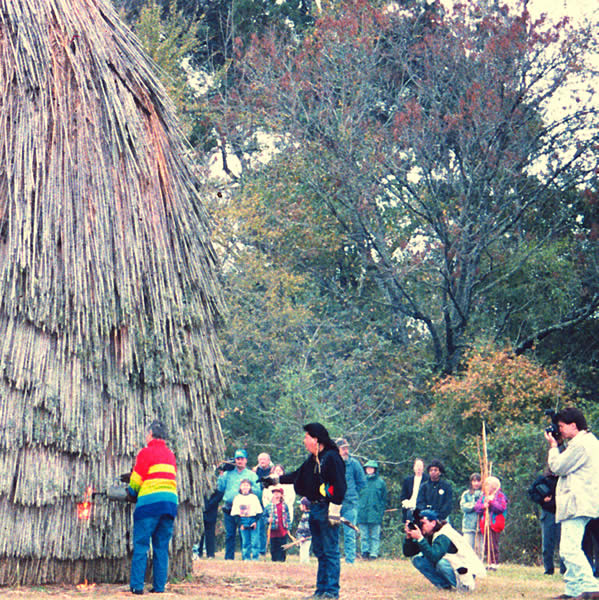
The archeologists had a reason for going to all that trouble. They wanted to study the house and the burial both before and after it burned. Then they could compare what they saw with the ancient Caddo house sites they had excavated. This is called "experimental archeology."
When everything was ready, a large group of archeologists, schoolkids, Caddo and Adai Indians, and local visitors (including Ranger's owner) gathered to burn down the house. A leader of the Adai Indians from nearby Louisiana blessed the ceremony by burning cedar and letting the smoke, which the Caddo and many other groups consider sacred, "bathe" the participants.
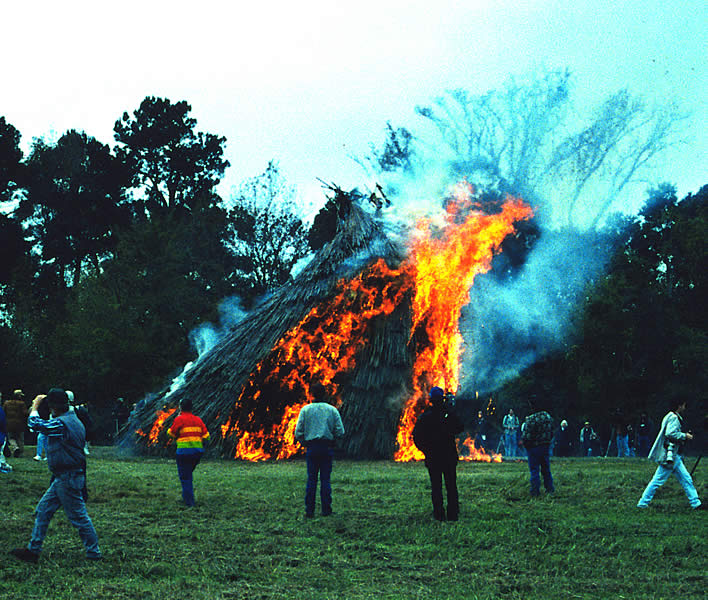
Finally the house was set afire. At first there was mostly smoke and not much fire, but suddenly the dried thatch caught fire. Within seconds the entire house was ablaze. The fire lasted only a few minutes before the tremendous heat burned up all the posts and the flaming house collapsed.
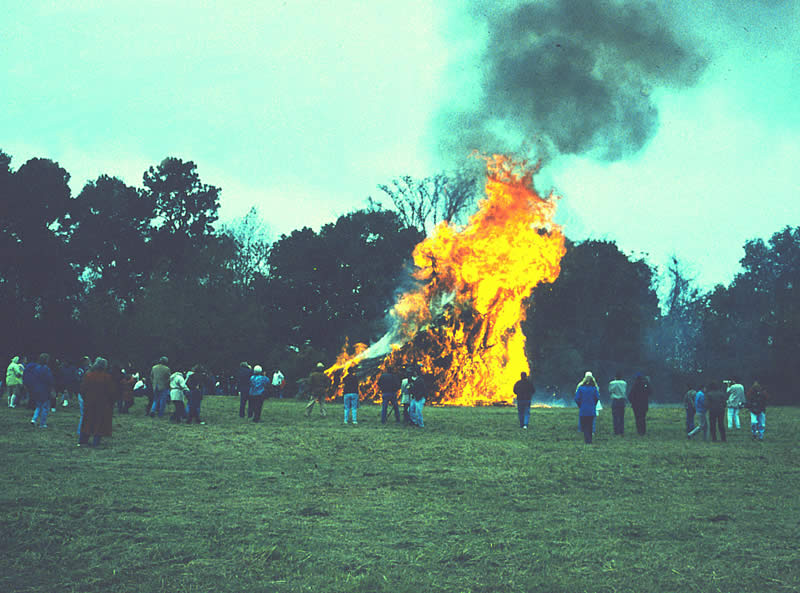
By the next year grass had grown over the burned house and hidden its story. Some day in the future, 10 or 20 years from now, a new group of archeologists will dig up the remains of the experimental grass house and compare what they find in the ground to the pictures you see here. In this way the archeological experiment will continue.
